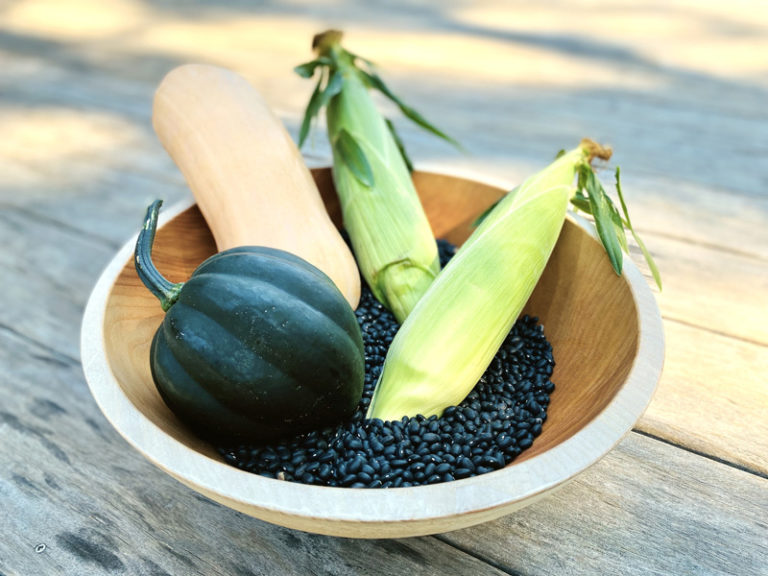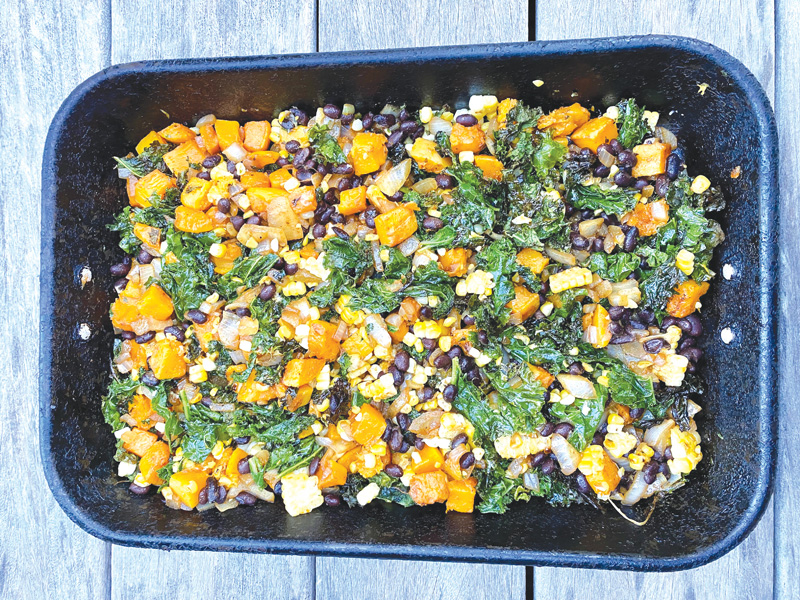
I’m very late to the podcast party. It was only this summer that I discovered the delight of the form. During these less-traveled Covid times, it was wonderful to hear voices from around the country and world. Of course, me being me, I then turned into an apostle, telling everyone they too should tune in (“You must listen to Chana Jaff-Walz’s ‘Nice White Parents’! ‘This American Life.’ ‘Gastropod.’”) And, of course, because nearly everyone else has been listening for years, each has their personal favorite, which is how I found the Green Dreamer podcast: My friend Tara recommended it.
What I appreciate about Green Dreamer Host and producer Kamea Chayne’s work is that she has introduced an entirely new (at least to me) set of global thinkers, healers, and leaders. I have been challenged and invigorated by the conversations. In Episode 312, Kamea Chayne interviews chef Brian Yazzie about his work for “the betterment of tribal communities, wellness and health through indigenous foods.” Brian Yazzie, also known as Yazzie the Chef (Diné/Navajo), is from Dennehotso, Arizona, and now based in St. Paul, Minnesota.
In their conversation, Yazzie shares his story of what it was like for him to grow up as one of eight children with a single mom on a reservation. After an early life on the streets and in and out of county jails, he says, “Cooking saved my life.” Brian is now a part of the Gatherings Cafe in the Minneapolis American Indian Center, which he says is “basically the birthplace of the American Indian Movement.” One of the cafe’s projects is called #FeedingOurElders, which serves what he calls “the decolonized menu.” He says, “I realized after traveling to so many tribal communities, most of them are still in ‘third-world’ poverty status, regardless if it’s in urban spaces or if it’s in rural areas like on reservations. The reason is the food access that we have right now — not a lot of tribal communities have access to organic or decolonized menus.”
In 2005, University of Kansas professor Devon Abbot Mihesuah introduced the idea of a decolonized diet in her book Recovering Our Ancestor’s Gardens. Cal State professor Luz Calvo and her partner Catriona Rueda Esquibel’s 2015 book Decolonize Your Diet added to the conversation. In very simple terms, a decolonized diet means a largely plant-based diet with no gluten, no sugar, no dairy. As I listened to Yazzie and Chayne talk and then read more, I was struck by the fact that recently so many of us have arrived at some version of a decolonized diet — no gluten, no sugar, no dairy — from other routes: to reduce inflammation from things like Lyme disease; to reduce glucose levels for those who live with diabetes; for better athletic performance or sleep; and from a climate change mitigation/regenerative farming perspective.

Yazzie uses the Three Sister Salad as one of the best examples of the power of a decolonized menu. As you may know, the Three Sisters are corn, beans, and squash, which were traditionally planted as companions. The corn provides long stalks for the beans to grow up. The beans fix the nitrogen in the soil, and the squash provides shade for all three plants so that they need less water and the soil has less light, which means fewer weeds. And when the Three Sisters are cooked together they provide nearly complete nutrition. In other words, they have complex carbohydrates, essential fatty acids, and complementary amino acids that when combined amount to a complete protein.
There are 574 recognized Indian Nations in North America. So, not surprisingly, because there are hundreds of Indian Nations, there are thousands of recipes for cooking with the Three Sisters. Stews, salads, casseroles. I went in search of a recipe. I could not find the salad that Yazzie mentions in the podcast and reached out to him, but did not hear back. Alas, cookbooks, the internet, and friends were my sources. I was not drawn to the recipes where the ingredients sounded like they were cooked to become essentially one. Too mushy for me. Others, the ingredients felt like they were still too independent and not married at the end. My bias entirely, but I was looking for a dish where the Three Sisters would make each other sing. I wanted the end product to feel like a celebration of the fall harvest. I wasn’t asking for much, was I?
I called the Orange Peel Bakery’s Juli Vanderhoop to talk about the Three Sisters and see if she had a family recipe. “It’s so funny that you called. My niece Emily [Vanderhoop] and I have been putting together a recipe. It’s so good, ” she told me. As we talked more about the symbiotic magic of the three plants and their nutritional value she said, “I mean, why did we ever move away from eating like this?”
I tried the recipe of Yazzie’s I’d seen on Delish for a Three Sister dish with roasted butternut squash, black beans, kale, and hominy, tweaking it for my tastebuds. He uses hominy. I used Morning Glory corn. And he uses garlic powder while I used garlic from my garden. It was delicious. I then moved on to Juli’s recipe. Also wonderful. After trying these recipes — and reflecting on decades of cooking variations of enchiladas and chilis with corn, zucchini and beans — I realized the third wonder of the Three Sisters: they are family. No matter what you do with them on the stove or in the oven, they work together.

Juli and Emily Vanderhoop’s Three Sisters Salad
This is based on the idea of a confetti salad where everything is a small dice.
1 medium-sized red onion, chopped into a small dice
2 jalapenos, finely chopped
1 red pepper, chopped into a small dice
1 green pepper, chopped into a small dice
1 pound cooked lima beans or fava beans
3 ears of corn
1 large hubbard, 2 acorn, or several pattypan squash cut into small ¾ in. dice
1-3 Tbsp. butter
1-3 Tbsp. olive oil
Fresh or dried sage & thyme. If fresh, a handful of each finely chopped
1-3 tsp. cumin
Cayenne (to taste), but if you are not sure, start with ⅛ teaspoon
Salt
Pepper
Method:
Grill (or roast) 3 ears of corn on a flame until they are a little scorched. Allow to cool and cut the kernels from the cob.
Melt 2 Tbsp. of butter and 2 Tbsp. of olive oil together in a large saute pan. Add the squash. Cook over high heat for about 5-7 minutes. Turn down and toss in the herbs, spices, salt and pepper. Add more butter and olive oil if necessary. The aim here is to not make a mash with the squash, but to create more of a home-fry consistency. So do not overstir or push on the cubes. Allow the squash to get golden and crisp on the outside and tender on the inside.
When the squash is done, mix all the ingredients together in a large bowl. Taste. Maybe add more salt or a little more pepper. We like to balance the salad with a peach infused balsamic vinegar and a little more olive oil. Of course all of this can and should be adjusted to one’s taste. If spice is not your thing, you can use or lose the jalapeno and add more savory herbs. This is just a basic structure and approach to a salad that is flexible. It can be served while the squash is still warm or cold. The Three Sisters are such a compliment to each other that they can serve as the foundation for so many flavors.